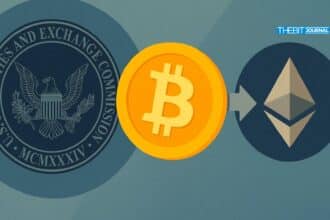Crypto Whale activity exploded during this week as big holders moved massive amounts of Bitcoin, Ethereum and major altcoins. On May 18 alone, over 4,000 BTC ($480 million) changed hands as recorded by on-chain trackers.
Whales offloaded or reallocated hundreds of millions in ETH and sent multi-billion token transfers in coins like SOL, XRP, DOGE and SHIB. This report compiles verified data on these large transactions and analyzes short-term effects on price, volume and sentiment.
BTC Whale Moves
Multiple mega-transactions hit the Bitcoin market. On May 18, Whale Alert recorded two 1,000 BTC transfers, each about $103.85 million between unknown wallets. Later that day, a 700 BTC move ($73,819,142) reportedly went to the Antpool mining pool, followed by a 500 BTC transfer ($52,706,071) also to Antpool.
Around the same time, 20:09 UTC+8 on May 18, another whale sent 699 BTC ($72,610,444) from an unknown address to Binance. In total, these transfers moved $407 million in BTC on May 18. These flows were seen while Bitcoin was trading near $105,000 and analysts noted that such large exchange deposits often mean pending sell-pressure.
Each of these moves got attention. The two 1,000 BTC transfers alone moved $207 million and people wondered if crypto whales were gearing for future volatility. Notably, the 699 BTC sent to Binance was flagged as an exchange deposit, a possible precursor to selling. In the hours after these flows, Bitcoin’s price held steady around $105-106k and network activity (volume) saw a brief bump as traders looked for direction.
| Date (UTC) | Amount (BTC) | USD Value | From | To | Source |
| 2025-05-18 12:27:27 | 1,000 | 103,847,886 | Unknown | Unknown | Whale Alert |
| 2025-05-18 15:45:02 | 500 | 52,706,071 | Unknown | Antpool | Whale Alert |
| 2025-05-18 12:09:?? | 699 | 72,610,444 | Unknown | Binance | Whale Alert |

Ethereum’s Whale Activity
On May 20, Arkham Intelligence reported that Ethereum co-founder Jeffrey Wilcke moved 105,737 ETH ($262,000,000) from his long-held address to a Kraken exchange wallet. Almost immediately, Kraken’s hot wallet split the deposit, sending roughly 1 ETH test transfers and then the remaining 105,736 ETH to eight new addresses. This is speculated as a re-distribution or security reshuffle of his holdings.
The size of this single move, over a quarter-billion dollars, was massive. Analysts wondered if Wilcke was selling some or all of this ETH, a common pattern for early holders. Whatever the case, this whale transfer coincided with a slight dip in ETH price: around May 20 at 10:00 UTC, ETH was down about 1.2% on 24h.
Table below shows the ETH whale transaction:
| Date (UTC) | Amount (ETH) | USD Value | From (Address) | To | Source |
| 2025-05-20 | 105,737 | 262,000,000 | Jeffrey Wilcke’s ETH wallet | Kraken (exchange) | Arkham Intelligence |
After this move, Ether trading volume spiked, CoinGecko reported $12.3 billion in spot volume in a day. But as Wilcke’s asset was quickly redistributed (likely to cold wallets), the price impact was muted. Traders were told to watch the 8 new addresses if more withdrawals to exchanges happened, ETH would see selling pressure.
Altcoin Whale Activity
Whale activity in other major altcoins was just as impressive – Solana, XRP, Cardano, Dogecoin, Shiba Inu and meme tokens. Key transfers were:
Solana (SOL): On May 21, 2 Solana whales moved 1,388,655 SOL ($235,449,867) on-chain. One transaction of 639,887 SOL ($108,640,417) moved between unknown wallets. Since the coins didn’t go to an exchange, analysts said this looked more like redistribution than an immediate sell-off.
Coincidentally, SOL was firming up, trading at $171.84 (up 3.27% on the day), so the whales were probably bullish. Big SOL transfers like this often trigger alerts, but here they had a short-lived effect: Solana briefly dropped into the $160-$175 range before continuing higher.
XRP: Ripple’s network saw a massive transfer on May 21: 236,982,972 XRP ($567,278,563) moved from a Kraken exchange wallet to an unknown address. Whales speculated it was a huge buy order but Ripple CTO David Schwartz said it was almost certainly just an internal exchange withdrawal.
As expected, XRP’s price barely moved, trading $2.40, roughly flat, down 3.0% on the day despite the half-billion dollar transfer. In other words, this whale activity had zero immediate impact on XRP’s price.
Cardano (ADA): Independent on-chain metrics showed whales are back in ADA. Santiment data reported large holders added 80,000,000 ADA in 48 hours around May 17-19. This accumulation happened as ADA sentiment was positive due to cross-chain partnerships news, even as ADA price dropped on broader crypto weakness.
Dogecoin (DOGE): On May 20, a “mystery whale” withdrew a total of 260,000,000 DOGE ($57 million) from the Robinhood exchange. This was in two chunks: 210M DOGE ($46M) and 50M DOGE ($11M) to the same unknown wallet. This fits a recent pattern of DOGE moving off exchanges into long-term storage. After this, Dogecoin’s price held steady around $0.00022 but network-wide DOGE metrics showed a surge in exchange outflows.
Shiba Inu (SHIB): A whale transfer burst put SHIB in the spotlight. Arkham-referenced reports noted that on May 22, a single whale withdrew 151,605,712,807 SHIB from Bybit to a private wallet, and around the same time, 106,270,656,242 SHIB left a Coinbase hot wallet.
These moves totaled $3–4 million at prevailing prices. The effect was dramatic: SHIB’s price soared on May 22 before retracing. Analysts attributed much of SHIB’s 24-hour spike to this on-chain activity as fewer SHIB remained on exchanges and retail FOMO kicked in.

The table below summarizes these major altcoin whale transfers:
| Token | Date (UTC) | Amount | USD Value | From | To | Source |
| SOL | 2025-05-21 | 639,887 SOL | 108,640,417 | Unknown | Unknown | Whale Alert |
| XRP | 2025-05-21 | 236,982,972 XRP | 567,278,563 | Kraken | Unknown | Whale Alert |
| DOGE | 2025-05-20 | 210,000,000 DOGE | 46,000,000 | Robinhood | Unknown | Whale Alert) |
| DOGE | 2025-05-20 | 50,000,000 DOGE | 11,000,000 | Robinhood | Unknown | Whale Alert) |
| SHIB | 2025-05-22 | 151,605,712,807 SHIB | ≈2,120,000 | Bybit | Unknown | Binance Sq. |
| SHIB | 2025-05-22 | 106,270,656,242 SHIB | ≈1,550,000 | Coinbase | Unknown | Binance Sq. |
These transfers show whales are actively reallocating altcoin holdings. In particular the Solana and SHIB moves coincided with rapid short-term rallies: Fartcoin (a Solana meme token) jumped 10.6% immediately after a whale bought 2.74 million units ($4.41M) on May 23 and SHIB’s multi-billion token inflows helped fuel a surge.
Crypto Whale Activity Market Impact
Overall, this crypto whale activity had mixed token-specific impacts on short-term market trends. In the Bitcoin market, the large transfers kept prices stable around the $105,000 level. Although depositing to exchanges can signal potential sell-offs, BTC continued to trade in a tight range (roughly $104k–108k) after the moves. Traders noted a small bump in BTC volume around May 18, but no big crash or pump solely from the whale flows.

In Ethereum Wilcke’s 105,737 ETH transfer spooked some: on-chain metrics showed an 18% surge in ETH spot volume that day. But ETH price remained range-bound. Some analysts argued this was even bullish, indicating a restructuring rather than an outright dump. The ETH was split into new wallets (via Kraken) so most of the supply was off exchanges, hence overall sentiment was mildly positive.
Among altcoins, crypto whale moves amplified the trend. On Solana, the whale swap of 1.39 M SOL coincided with a 3.2% price jump to $172.50 (May 23) as traders saw it as bullish. The same Fartcoin purchase on Solana drove a 10.6% rally and volume spike, showing how meme-coin whales can spark mania.
For XRP, a quarter-billion dollar transfer had zero impact as XRP stayed at $2.40, down 3% because the funds never entered the spot market. Dogecoin’s whale withdrawals (260M DOGE from Robinhood) were part of a shift away from exchanges, a bullish sign, but DOGE’s price stayed at $0.00022 as bigger market forces dominated.
In summary, while crypto whales added short-term volatility to individual coins, the broader market context ruled. The NASDAQ and S&P-500 were mixed this week and major crypto indexes were quiet. However, crypto traders should pay attention: on-chain signals from Whale Alert, Arkham, Lookonchain are guiding sentiment. Markets believe these crypto whale moves as “something to watch,” and traders were setting tighter stops or chasing momentum accordingly.
Conclusion
This past week was crypto whale season. Thousands of BTC and hundreds of thousands of ETH moved between wallets and exchanges, and altcoin whales rebalanced multi-billion token positions.
These moves drove trading volume and short-lived price spikes in Fartcoin and SHIB. Overall, crypto whales were more opportunistic than panicked: markets absorbed the flows with only modest volatility. But the concentration of crypto whale activity this week shows how much influence a few wallets can have and why tracking these large transactions is key to crypto market analysis.
FAQ
What is a crypto whale?
A crypto “whale” is an individual or entity that holds a very large amount of cryptocurrency, often hundreds or thousands of coins. Because whales own a lot of the market they can move the price with their buys and sells.
Why do whales transfer coins between wallets?
Reasons vary: for security (moving to cold storage), redistribution (splitting funds), or preparing to sell/buy. For example, moving coins to an exchange’s wallet often means a sell order. Moving them out of exchanges (to private wallets) means long term holding.
What’s the difference between CEX and DEX in whale context?
CEX stands for Centralized Exchange (like Binance or Kraken), moving coins to a CEX means it might be traded or sold. DEX is Decentralized Exchange; moving coins there (or providing liquidity) is usually on-chain. In whales’ case, large transfers often involve CEX wallets.
How do crypto whale transfers affect retail traders?
Big transfers can move market sentiment and short term liquidity. If crypto whales deposit coins to exchanges, they may trigger sell offs. Large purchases especially of meme coins can trigger rallies and FOMO. Retail traders watch whale alerts to anticipate these moves.
Glossary
Crypto Whale: Someone or something that owns a huge amount of a cryptocurrency. Whale transactions (hundreds to thousands of coins) are big enough to move the market.
OTC (Over-the-Counter): Direct crypto trades between parties, outside exchanges. Whales or institutions use OTC to swap large amounts e.g. BTC for ETH or stablecoins without slippage.
Exchange (CEX vs. DEX): CEX (Centralized Exchange) is a trading platform like Binance or Kraken. DEX (Decentralized Exchange) runs on-chain (like Uniswap). Crypto Whale moves often involve CEX addresses (e.g. depositing to sell) or on-chain DEX swaps.
Stablecoin: A crypto token pegged to a fiat value (e.g. USDC, USDT). Whales use stablecoins to buy or offload crypto quietly.




























